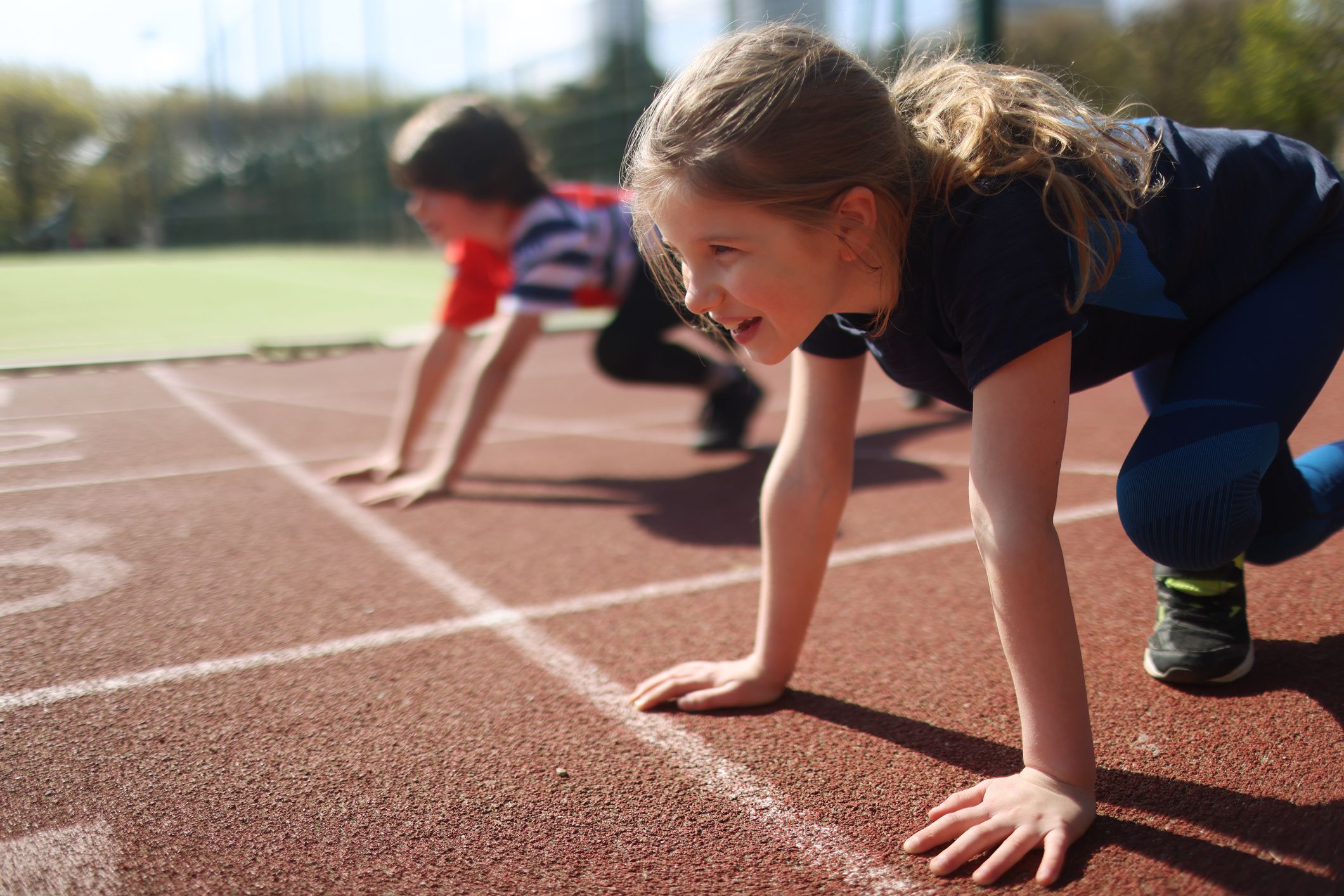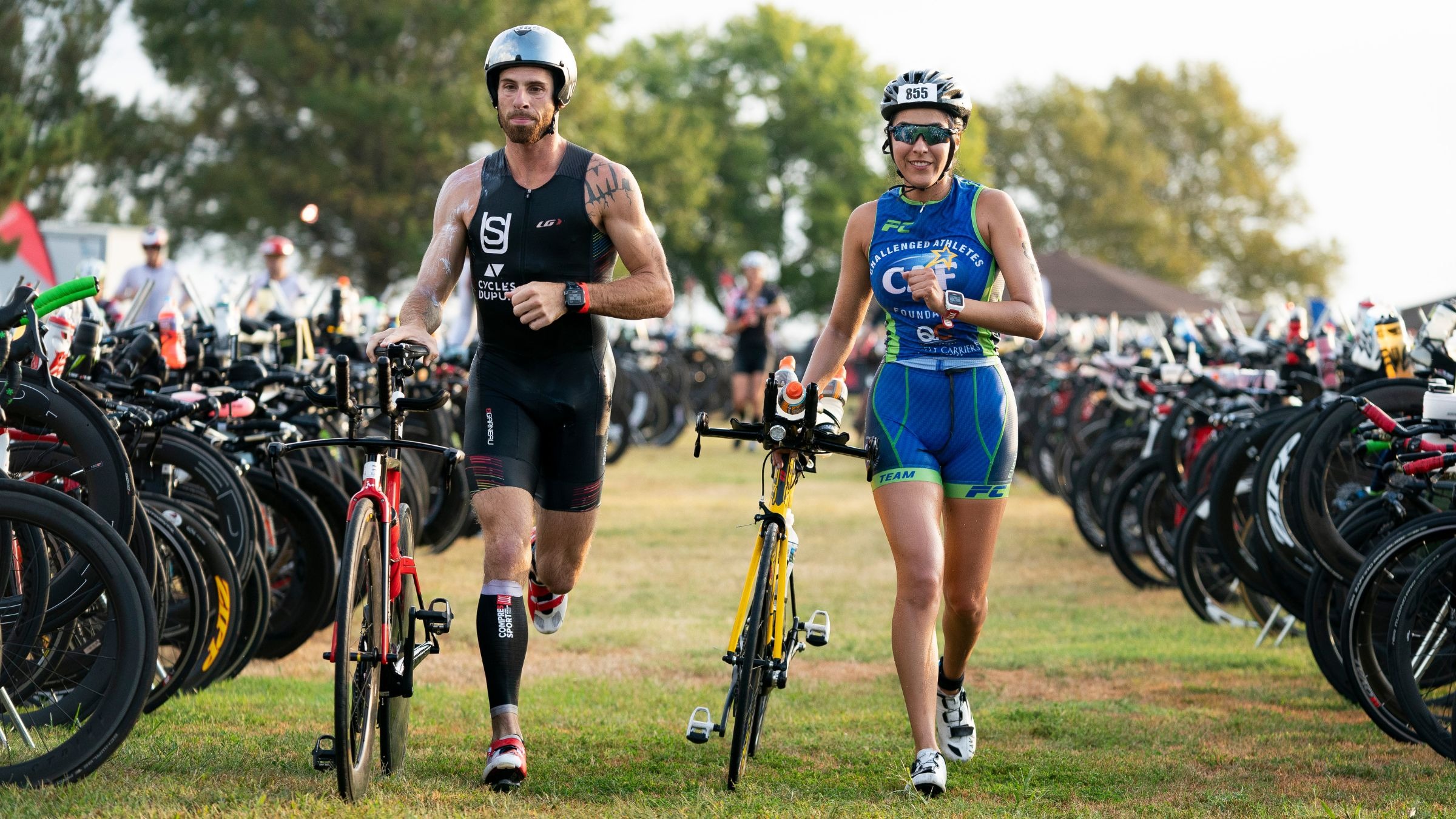Home>Misc>Featured>How Young Is Safe For A Child To Start Long Distance Running


Featured
How Young Is Safe For A Child To Start Long Distance Running
Modified: August 21, 2023
Featured: Find out the appropriate age for a child to start long distance running and ensure their safety and well-being.
Introduction
Long distance running is a popular form of exercise and competition enjoyed by people of all ages. While it is commonly associated with adults and professional athletes, there has been a growing interest in involving children in this physical activity as well. However, parents and guardians often wonder about the appropriate age for a child to start long distance running and whether it is safe for their young ones to partake in this demanding sport.
Engaging in long distance running at a young age can have numerous benefits for children. It promotes physical fitness, cardiovascular health, and overall well-being. It also fosters discipline, determination, and goal-setting skills. However, it is crucial to consider the potential risks and concerns associated with long distance running, such as the impact on growing bones and joints, overtraining, and burnout.
To determine if a child is physically ready to start long distance running, parents should take into account factors such as their child’s age, overall health, and any existing medical conditions. Mental readiness is equally essential, as young runners need to have the maturity and motivation to handle the rigors of training and competition.
In this article, we will explore the benefits and risks of long distance running for children, discuss how to assess physical and mental readiness, and provide guidance on training techniques, injury prevention, and the involvement of parents and coaches.
Benefits of Long Distance Running for Children
Engaging in long distance running can offer a multitude of benefits for children’s physical and mental well-being. Here are some key advantages:
1. Physical fitness: Long distance running is an excellent way for children to improve their cardiovascular fitness and endurance. Regular running helps to strengthen the heart, lungs, and muscles, promoting overall physical fitness and stamina.
2. Weight management: With the prevalence of childhood obesity on the rise, long distance running can be an effective means of maintaining a healthy weight. It helps to burn calories, reduce body fat, and increase metabolism, contributing to weight management.
3. Bone and muscle development: Running exerts stress on the bones, leading to greater bone density and strength. It also helps to develop strong muscles, enhancing overall physical strength and coordination.
4. Mental well-being: Long distance running has significant psychological benefits for children. It helps to reduce stress, anxiety, and depression by releasing endorphins, also known as the “feel-good” hormones. Running can also improve sleep patterns and boost confidence and self-esteem.
5. Discipline and goal-setting: Engaging in long distance running teaches children the importance of discipline and setting goals. Following a training schedule, working towards achieving personal bests, and participating in races instills valuable skills in discipline, determination, and perseverance.
6. Social interaction: Participating in long distance running events provides an opportunity for children to interact with their peers, make new friends, and develop teamwork and sportsmanship.
It is important to note that the benefits of long distance running for children can only be reaped when the activity is approached in a safe and age-appropriate manner. The next section will discuss the potential risks and concerns associated with long distance running for young runners.
Risks and Concerns
While long distance running can have numerous benefits for children, it is essential to be aware of the potential risks and concerns associated with this activity. Some of the key considerations include:
1. Impact on growing bodies: The developing bones and joints of children are more vulnerable to injuries from repetitive impact. Long distance running puts stress on these structures, increasing the risk of overuse injuries such as shin splints, stress fractures, and tendonitis.
2. Overtraining and burnout: Children may be susceptible to overtraining if they are pushed too hard or participate in excessive mileage or intense training. Overtraining can lead to fatigue, decreased performance, and an increased risk of injuries. It can also contribute to burnout and a loss of interest in running.
3. Lack of proper coaching: Without appropriate guidance and coaching, children may not learn proper running techniques, leading to inefficient biomechanics and an increased risk of injury. It is crucial for young runners to receive proper training and supervision from experienced coaches.
4. Emotional and psychological stress: Intense training and competition can put emotional and psychological stress on young runners, leading to anxiety, pressure, and potential negative effects on mental well-being. It is important to create a supportive and balanced environment for young athletes.
5. Growth and development concerns: Intense and prolonged training in long distance running may impact a child’s growth and development. Overtraining can potentially interfere with hormonal balance and delay puberty.
It is important for parents, coaches, and young runners to be aware of these risks and take appropriate measures to mitigate them. The next sections will discuss physical and mental readiness, as well as training techniques and safety precautions for young runners.
Physical Readiness
Before a child starts long distance running, it is essential to assess their physical readiness. Consider the following factors to determine if a child is physically prepared for this vigorous activity:
1. Age: While there is no definitive age requirement for children to start long distance running, it is generally recommended that they wait until they are at least six or seven years old. This allows their bones and muscles to develop further and reduces the risk of injury.
2. Health condition: Ensure that the child is in overall good health with no underlying medical conditions that could be worsened by intense physical activity. It is advisable to consult a healthcare professional before starting any high-intensity exercise program.
3. Physical fitness level: Assess the child’s current fitness level and their ability to engage in physical activity for extended periods. It is crucial that they can comfortably and consistently complete shorter runs before progressing to longer distances.
4. Bone and joint development: Consider the child’s bone and joint development. They should have reached a point where their growth plates are sufficiently closed or close to closure. This helps minimize the risk of growth plate injuries.
5. Balance and coordination: Evaluate the child’s balance and coordination skills, as these are important for running efficiently and reducing the risk of falls and injuries.
Remember, every child is unique, and their readiness may vary. Slowly introduce running into their routine, gradually increasing the distance and intensity over time to allow their bodies to adapt and build strength.
In the next section, we will discuss the importance of mental readiness for young runners and how to gauge their readiness for long distance running.
Mental Readiness
While physical fitness is crucial, it is equally important to assess a child’s mental readiness before they start long distance running. Here are some factors to consider:
1. Motivation and interest: Determine if the child has a genuine interest in running and a strong motivation to participate in long distance events. Their enthusiasm and willingness to put in the effort required for training and competition are key indicators of their mental readiness.
2. Maturity and focus: Evaluate the child’s level of maturity and ability to stay focused and committed to a training schedule. Long distance running can be physically and mentally demanding, so it is important for young runners to have the discipline to follow through.
3. Goal-setting ability: Gauge the child’s ability to set realistic goals and work towards achieving them. Setting both short-term and long-term goals in running helps to maintain motivation and provides a sense of accomplishment.
4. Resilience and perseverance: Running long distances can be challenging and may involve setbacks, disappointments, and even physical discomfort. Assess the child’s ability to bounce back from setbacks and persevere through difficult periods.
5. Understanding of training and competition: Ensure that the child has a basic understanding of what it means to train and the expectations of participating in races. They should be aware of the commitment required and the potential challenges they may face.
It is important to have open conversations with the child, allowing them to express their feelings and concerns about long distance running. Encourage their involvement in the decision-making process and consider their thoughts and preferences.
If a child demonstrates both physical and mental readiness, they can embark on the training journey with confidence. The next section will discuss training techniques specifically designed for young runners to help them progress safely and effectively.
Training Techniques for Young Runners
When it comes to training young runners for long distance events, it is essential to prioritize their safety, enjoyment, and gradual progression. Here are some effective training techniques:
1. Start with shorter distances: Begin by introducing shorter runs to build endurance gradually. Focus on consistency and gradually increase the distance over time. Avoid pushing young runners too hard and allow their bodies to adapt to the demands of longer distances.
2. Limit training volume: Young runners should not engage in high-volume training typically associated with adult long distance runners. Instead, focus on quality over quantity. Incorporate rest days and cross-training activities to prevent overuse injuries and promote overall fitness.
3. Emphasize proper form and technique: Teach young runners the importance of good running form and technique to reduce the risk of injuries. Encourage them to maintain an upright posture, land mid-foot, and utilize a relaxed arm swing.
4. Incorporate interval training: Introduce interval training, where runners alternate between periods of higher intensity and active recovery. This helps build speed, endurance, and cardiovascular fitness while reducing the risk of burnout.
5. Gradually introduce race simulations: As young runners progress, include race simulations in their training regimen. This involves practicing running at race pace and familiarizing them with the mental and physical challenges they may face during actual events.
6. Cross-train for variety: Encourage young runners to engage in other physical activities such as cycling, swimming, or playing other sports. Cross-training helps prevent overuse injuries, enhances overall fitness, and improves muscle balance and coordination.
7. Encourage rest and recovery: Rest and recovery are crucial for young runners. Ensure they have adequate time for rest, sleep, and recovery between training sessions to allow their bodies to heal and adapt to the demands of running.
Remember, each child is different, and their training needs may vary. Keep the training environment enjoyable and supportive, emphasizing the importance of having fun and maintaining a healthy balance between running and other aspects of their lives.
In the next section, we will discuss injury prevention strategies and safety precautions that parents and coaches should be aware of when training young runners for long distance events.
Injury Prevention and Safety Precautions
When training young runners for long distance events, it is crucial to prioritize injury prevention and implement safety precautions. Here are some strategies to consider:
1. Proper warm-up and cool-down: Prioritize a thorough warm-up session before each run, including dynamic stretching and light exercises to prepare the muscles and joints for the demands of running. Similarly, ensure a proper cool-down routine to help the body recover and prevent muscle soreness.
2. Gradual progression: Avoid sudden increases in training volume or intensity. Gradually increase the distance, speed, and intensity of training sessions to allow the body to adapt and reduce the risk of overuse injuries.
3. Cross-training: Encourage young runners to engage in cross-training activities that strengthen muscles not typically used in running. This helps prevent muscle imbalances and overuse injuries while providing variety in their training routine.
4. Adequate rest and recovery: Ensure young runners have sufficient rest days in their training schedule. Rest and recovery are essential for muscle repair and growth, helping to prevent fatigue-induced injuries and burnout.
5. Proper nutrition and hydration: Emphasize the importance of a well-balanced diet to support young runners’ energy levels, muscle recovery, and overall health. Hydration before, during, and after runs is crucial to prevent dehydration and optimize performance.
6. Injury recognition and treatment: Teach young runners the importance of listening to their bodies and recognizing signs of injury. Promptly address any pain, discomfort, or unusual symptoms, and seek medical attention or consult a healthcare professional, if needed.
7. Appropriate footwear and running gear: Ensure young runners have proper running shoes that fit well and provide adequate support and cushioning. Appropriate clothing and protective gear, such as reflective materials and sunscreen if running outdoors, should also be utilized.
8. Supervision and communication: It is crucial for parents and coaches to provide proper supervision and establish open lines of communication with young runners. Encourage them to share any concerns, discomfort, or issues they may be experiencing during training.
By implementing these injury prevention strategies and safety precautions, parents and coaches can help young runners enjoy the benefits of long distance running while minimizing the risk of injuries and ensuring a safe training environment.
In the final section, we will discuss the role of parents and coaches in supporting young runners’ journey in long distance running.
The Role of Parents and Coaches
Parents and coaches play a crucial role in supporting young runners as they embark on their journey in long distance running. Here are some key responsibilities and ways they can contribute:
1. Creating a supportive environment: Parents and coaches should create a supportive and positive environment for young runners. Encourage them, celebrate their progress, and offer constructive feedback to foster their love for running.
2. Proper guidance and supervision: Parents and coaches should provide proper guidance and supervision during training sessions. This includes teaching young runners about proper form, technique, and safety precautions.
3. Setting realistic expectations: Help young runners set realistic expectations and goals. It is important to strike a balance between encouraging their ambition and ensuring they do not feel overwhelmed or pressured.
4. Communication and motivation: Maintain open lines of communication with young runners. Listen to their concerns, provide guidance, and offer motivation and support during both successful and challenging times.
5. Monitoring workload and rest: Parents and coaches should monitor training workload and ensure young runners have sufficient rest and recovery time. This helps prevent overtraining, fatigue, and burnout.
6. Connecting with other resources: Parents and coaches can connect young runners with other resources, such as running clubs, knowledgeable professionals, and experienced runners, to provide further guidance and inspiration.
7. Encouraging a balanced lifestyle: Emphasize the importance of a balanced lifestyle that includes not only running but also other activities, hobbies, and rest. Help young runners manage their time effectively to avoid excessive stress or neglecting other aspects of their lives.
8. Advocating for safety: Parents and coaches should prioritize the safety and well-being of young runners. Make sure they have access to appropriate running gear, proper nutrition, hydration, and necessary medical care when needed.
By fulfilling these roles, parents and coaches can help young runners navigate the world of long distance running with confidence, enjoyment, and safety.
To sum up, long distance running can offer numerous benefits for children’s physical and mental well-being. However, considerations such as physical and mental readiness, training techniques, injury prevention, and parental and coaching support are essential to ensure a positive and safe experience for young runners.
Conclusion
Long distance running can be a rewarding and beneficial activity for children, but it is important to approach it with care and consideration. Assessing a child’s physical and mental readiness, implementing appropriate training techniques, and prioritizing injury prevention are key to ensuring a safe and enjoyable experience.
By engaging in long distance running, children can improve their cardiovascular fitness, build strength, develop discipline, and foster a positive mindset. It provides an avenue for them to set goals, challenge themselves, and connect with their peers in a supportive and competitive environment.
Parents and coaches have a crucial role in supporting young runners, providing guidance, and creating a nurturing atmosphere. They should promote a balanced approach that emphasizes rest, recovery, and overall well-being in addition to training and competition.
Ultimately, the decision of when a child is ready to start long distance running should be based on their individual physical and mental maturity. It is important to consult with healthcare professionals and experienced coaches to ensure the child’s safety and well-being.
With proper preparation, appropriate training techniques, and a supportive network of parents and coaches, children can embark on a fulfilling and lifelong journey in long distance running.
Remember, the physical and mental health of young runners should always be the top priority. By ensuring a safe and positive experience, we can instill a love for running and promote a healthy and active lifestyle in children for years to come.





